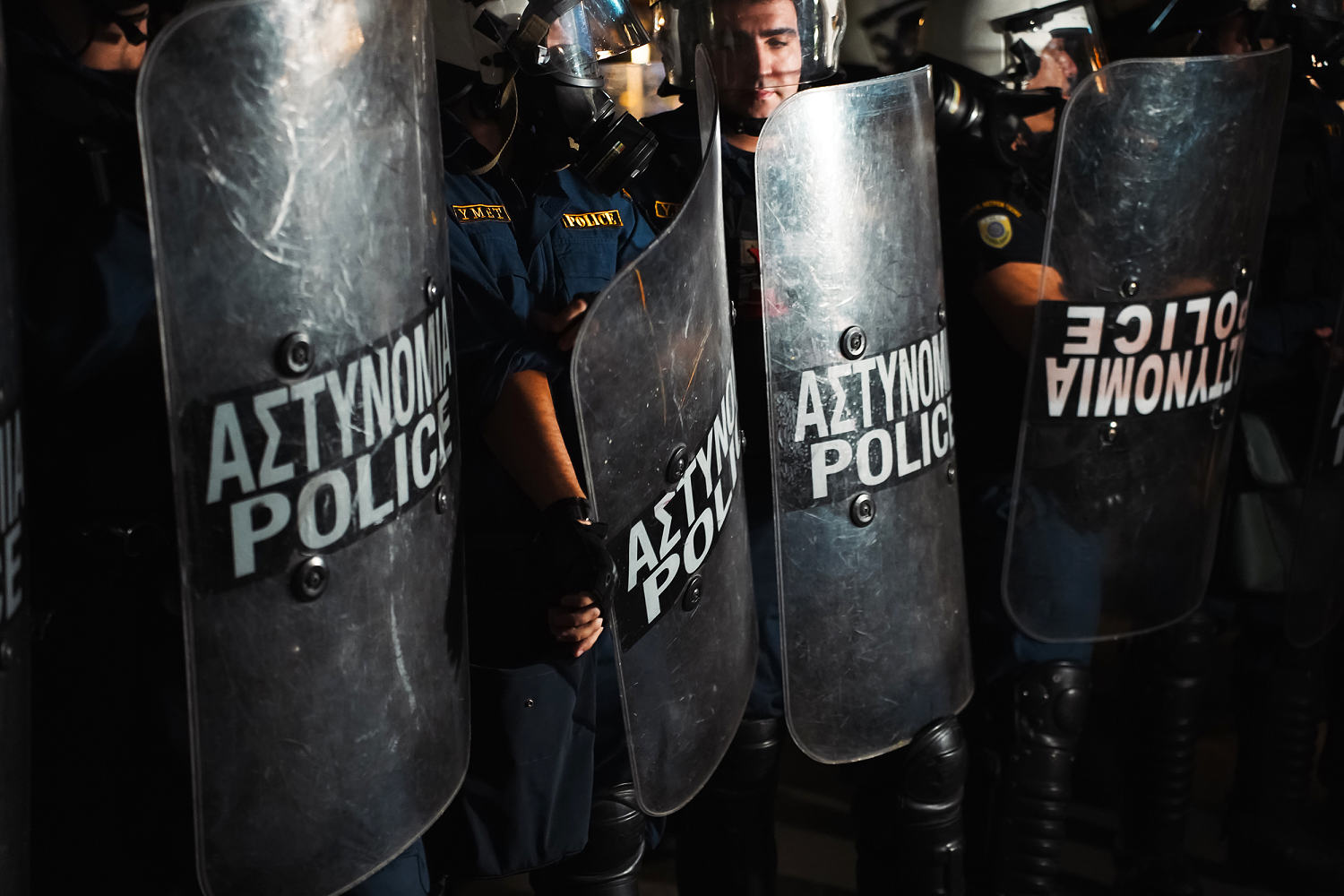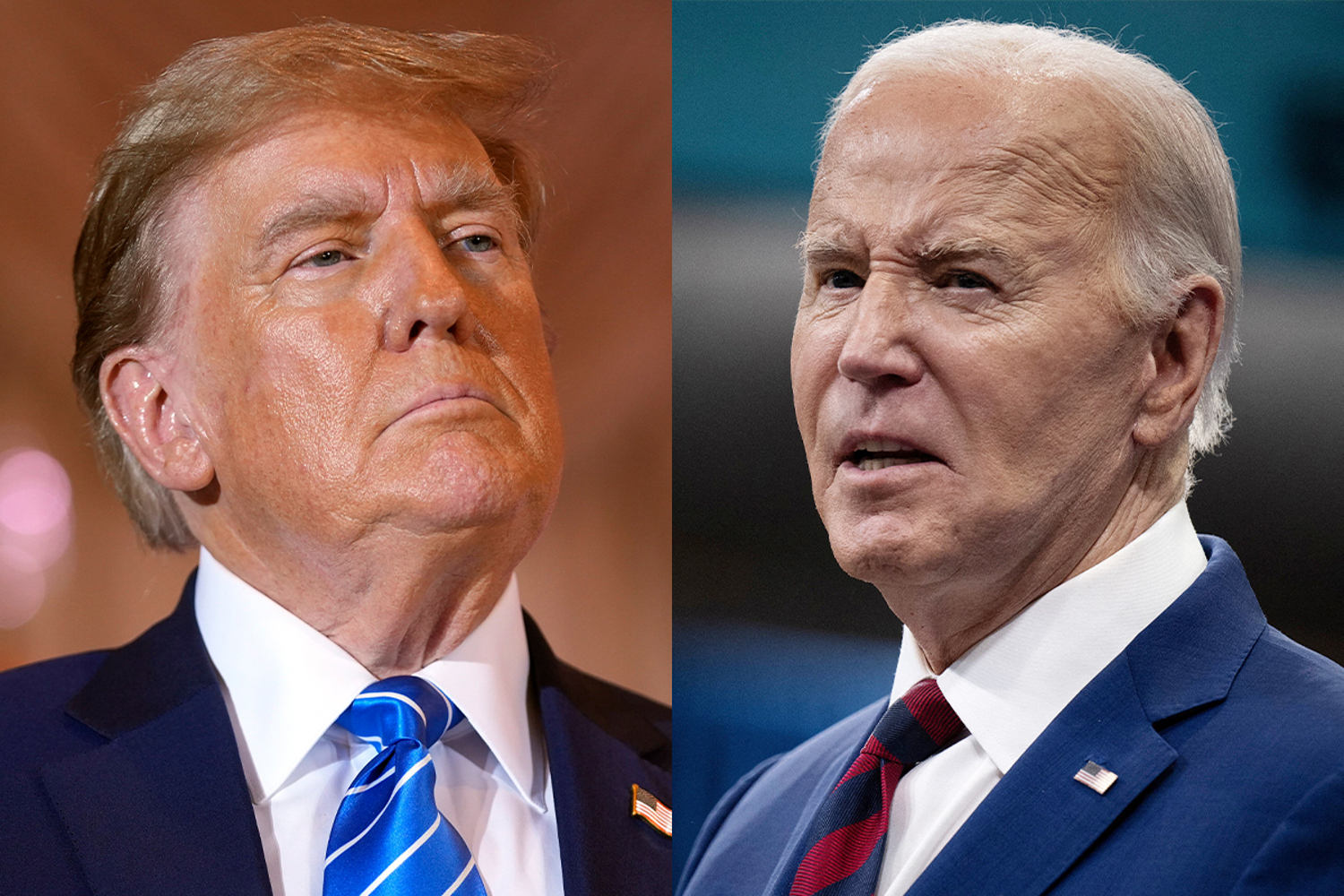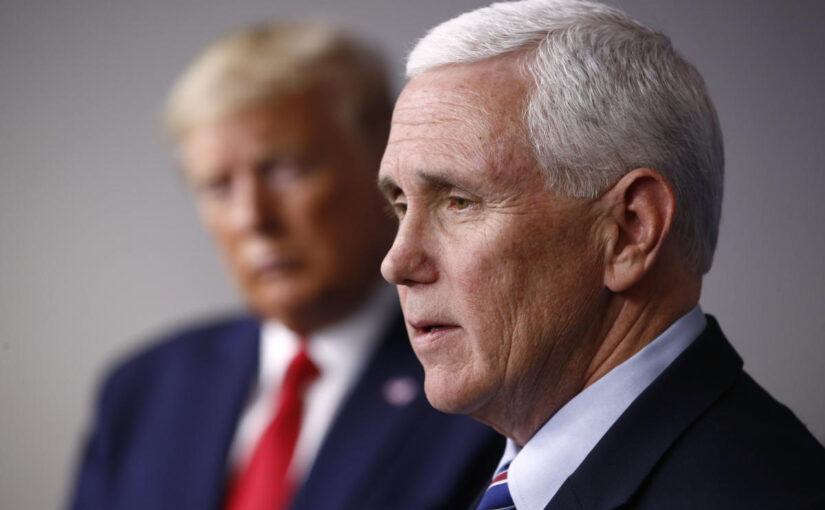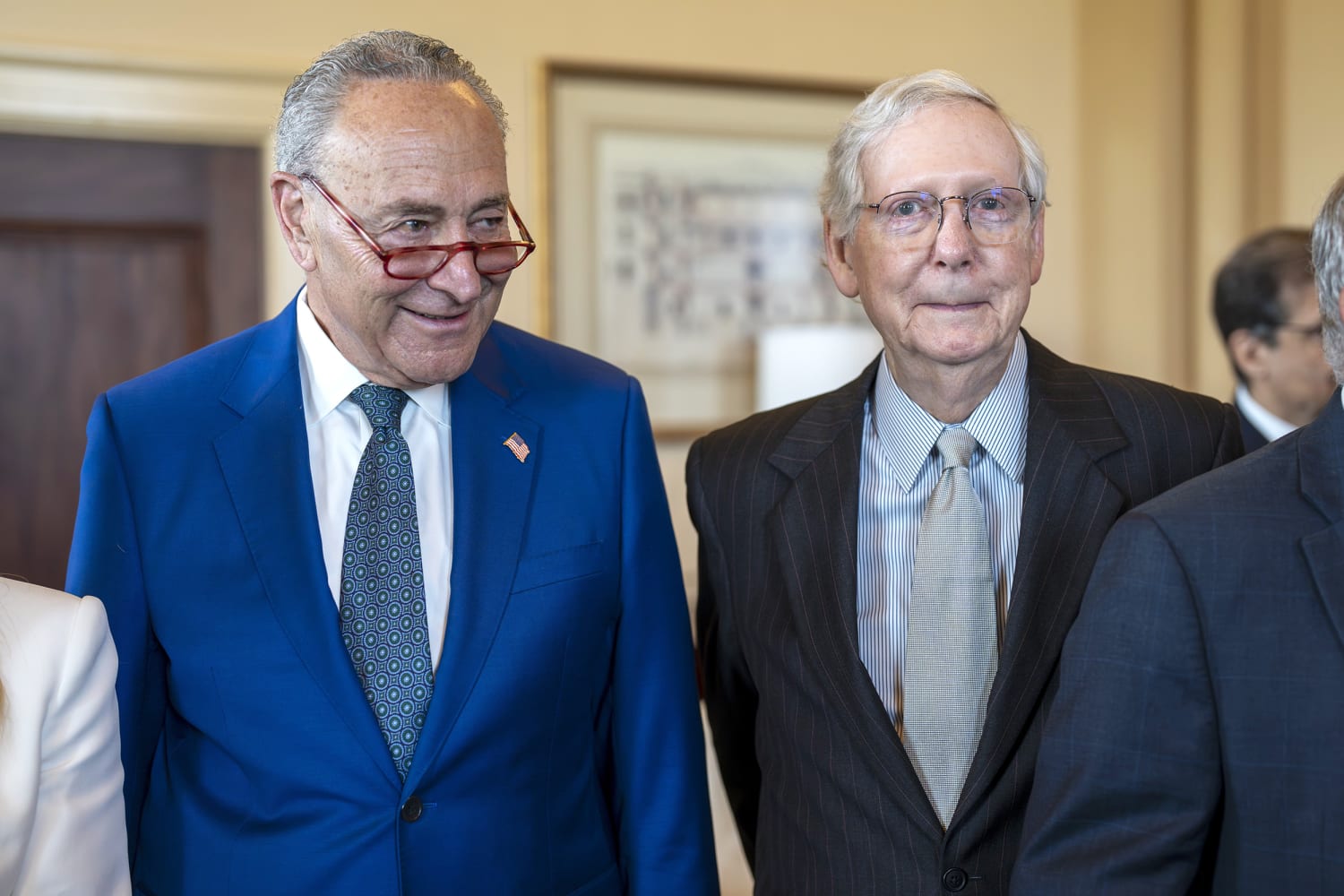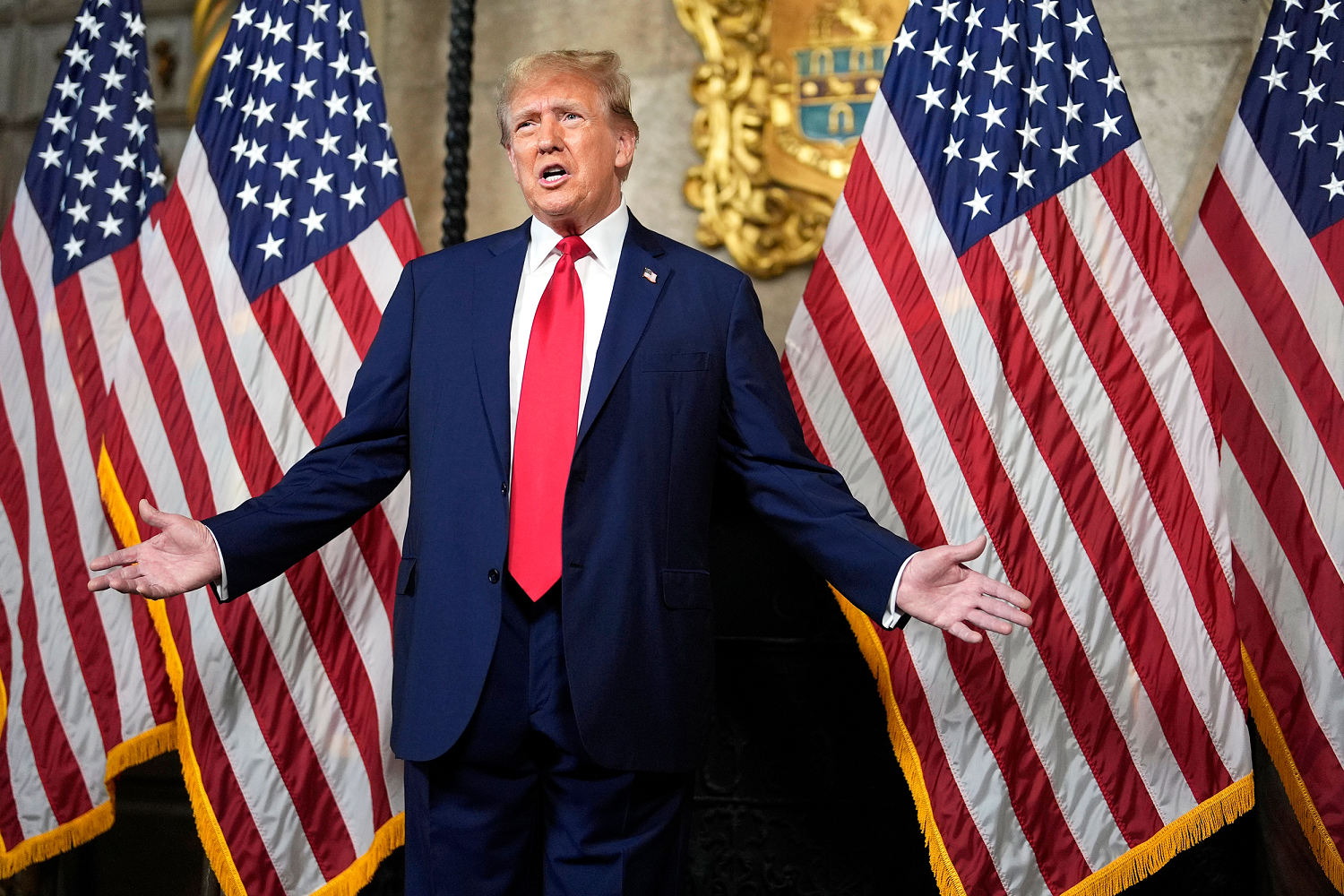
Surging crime levels, out-of-control Democratic cities and “migrant crime.”
Former President Donald Trump regularly cites all three at his campaign rallies, in news releases and on Truth Social, often saying President Joe Biden and Democrats are to blame.
But the crime picture Trump paints contrasts sharply with years of police and government data at both the local and national levels.
FBI statistics released this year suggested a steep drop in crime across the country last year. It’s a similar story across major cities, with violent crime down year over year in Chicago, New York and Washington, D.C.
NBC News analyzed crime data to evaluate Trump’s assertions about the topic.
U.S. and big city crime rates
Trump’s campaign often refers to crime levels, regularly pointing the finger at Biden.
“On Joe Biden’s watch, violent crime has skyrocketed in virtually every American city,” the campaign said in a news release published this month on its site.
Trump himself has made similar remarks.
“Four years ago, I told you that if crooked Joe Biden got to the White House, our borders would be abolished, our middle class would be decimated and our communities would be plagued by bloodshed, chaos and violent crime,” Trump said in a speech last month at the Conservative Political Action Conference. “We were right about everything.”
Government figures don’t support that characterization.
Reported violent crime dropped 6% across the board when comparing the last three months of 2022 to the same period in 2023, the FBI reported.
The reported drops were especially pronounced in the big cities that Trump often assails, many of which have Democratic mayors. Violent crime dropped by 11% in cities with populations of 1 million or more, according to FBI data, while murders dropped by 20%, rape was down 16%, and aggravated assault fell by 11%.
Reached for comment, the Trump campaign pointed to other reports indicating that certain types of crimes increased in specific cities.
At the national level, the reported rate of violent crime in 2022, the most recent full year with comprehensive FBI data, was 380.7 offenses per 100,000 people. That’s lower than the overall reported violent crime rate from 2020 — the last full year Trump was in office — when the figure was at 398.5.
The lowest reported violent crime rate of Trump’s presidency was in 2019, when the metric was at 380.8 — in line with the 2022 rate.
The FBI said it will release more comprehensive 2023 crime data in October, just before the election.
The Trump campaign, reached for comment, cited certain categories of violent crime, such as motor vehicle theft, as having increased during the Biden administration, according to FBI figures.
“Joe Biden is trying to convince Americans not to believe their own eyes,” campaign press secretary Karoline Leavitt said in a statement, adding that “Democrats have turned great American cities into cesspools of bloodshed and crime.”
New York City crime
Trump, who was born and raised in New York but now lives in Florida, often rails against what he portrays as an increasing crime rate in his former hometown.
Those references to soaring violence have only increased as he faces criminal charges in New York accusing him of falsifying business records related to hush money payments to adult film star Stormy Daniels. Trump, who has pleaded not guilty in that case, must also post a $175 million bond to prevent state Attorney General Letitia James from collecting the judgment from a New York civil fraud case.
“I did nothing wrong, and New York should never be put in a position like this again,” Trump posted on Truth Social about the civil judgment in all capital letters. “Businesses are fleeing, violent crime is flourishing, and it is very important that this be resolved in its totality as soon as possible.”
In a separate post, he claimed that “murders & violent crime hit unimaginable records” in the city.
However, major crimes in New York City are down this year by 2.3%, according to police department data comparing year-to-date figures to the same period in 2023.
Those figures for last year were also far below the highs from recent decades. In 1990, more than 527,000 major crimes were reported, compared to more than 126,000 last year, according to New York police data — a drop of more than 75%.
In 2001, more than 162,000 major crimes were reported in New York. The figure dropped by more than 20% over the next two decades.
At the same time, New York City data indicates that the number of major crimes increased in the past few years, though reported violent crimes like murder and rape were down last year from previous years.
‘Migrant crime’
Trump’s dehumanizing language about migrants has become a mainstay of his political speeches since he first sought office in 2015.
In a news release this month, his campaign said the “border Crisis has created a tragic surge in violent crime against innocent American citizens at the hands of some of the world’s most violent criminals.”
Trump has also focused his energy on high-profile cases such as the death of Laken Riley, who was killed in Georgia while jogging. The suspect is a Venezuelan citizen who entered the U.S. illegally in 2022.
“Every day, innocent citizens are being killed, stabbed, shot, raped and murdered because of Biden migrant crime,” Trump said in a video posted to his campaign’s X account last week.
However, there is no evidence of a migrant-driven crime wave in the U.S., according to local police department data.
Crime reports have decreased in several major cities targeted by Texas’ Operation Lone Star, a program backed by Republican Gov. Greg Abbott that flies or buses migrants from the state to Democratic-run cities across the U.S.
Several of those cities — New York, Chicago, Washington and Philadelphia — have had decreases in year-to-date reported crime totals compared to the same period last year.
